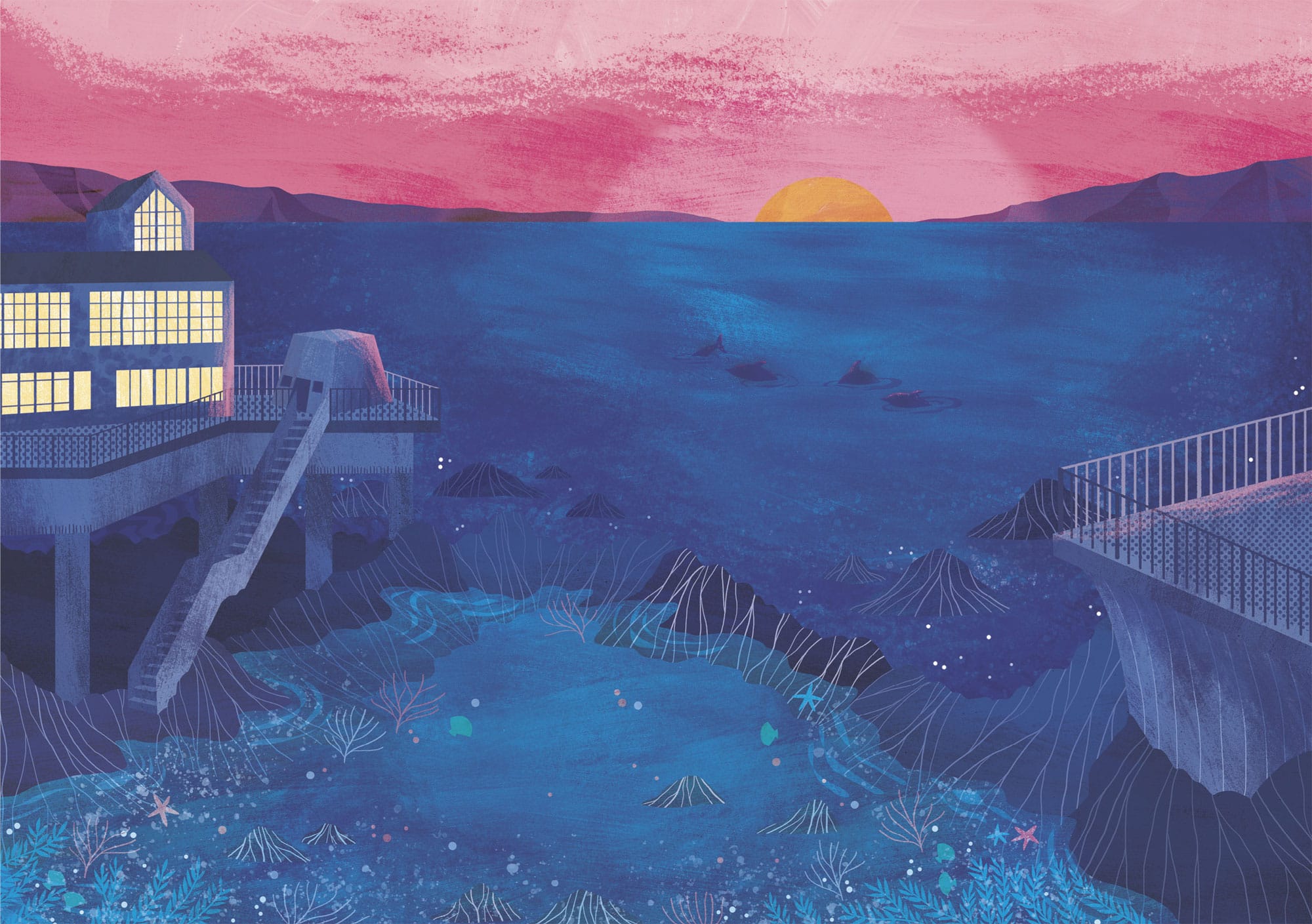MONTEREY
Which? |
Cannery Row by John Steinbeck (1945) |
What? |
Ocean-side California street where life at its most colourful ebbs and flows |
IN THE early, pearly morning, The Row begins to wake. Gulls start their vigils on corrugated-iron rooftops, waiting for trash to become lunch; sea lions bark like hunting dogs over the heave of the ocean. People stir, feet flip-flapping along the tidy sidewalk. A new cast of human characters thrives here now: trinket-shop keepers, aquarium cleaners, tourist dealers. The whole street spruced up for a huge new shoal: visitors in their millions. But back in the day, when the factories were grinding, empty lots lay under mallow weeds and the air reeked of rotten fish, it was a different troupe – vagrants, prostitutes, artists, idlers – who frequented this industrious neighbourhood by the sea. Like a human rock pool, Cannery Row was flow and vitality, colour and oddity, a discrete ecosystem of humanity striving to stay afloat …
Cannery Row, a waterfront avenue in Monterey, California, is one of the most famous streets in America. John Steinbeck was born in Salinas, a little northeast of Monterey, in 1902, and set many of his works in this area of central California where the Coast Ranges and rich agricultural valleys – the ‘salad bowl of the States’ – meet the Pacific Ocean.
By 1930, Steinbeck had moved to Pacific Grove, close to Ocean View Avenue, aka Cannery Row. It was a street lined with noisy, stinking sardine canneries that processed the spoils of the nutrient-rich water offshore – for a time, one of the most productive fishing grounds in the world. The stock seemed inexhaustible, and huge purse-seiners with nets a quarter-mile long ravaged the ocean. This kept workers working during the Great Depression and fed needy mouths during the Second World War. But by the mid-1950s, the sardine supply ran dry. The industry collapsed; the last cannery closed in 1973.


Published in 1945, but set in an indeterminate period before that, Steinbeck’s eponymous novel remembers The Row with fond sentiment. There are no Nazis in these pages. Indeed, Steinbeck himself called Cannery Row a ‘kind of nostalgic thing’, penned for a group of soldiers who asked him to ‘write something funny that isn’t about the war’.
The resulting book is like a series of vivid portraits, showing life on The Row in all its odoriferous, eccentric, enterprising glory. The plot, such as it is, follows the exploits of Mack and the boys, a band of resourceful bums who doss in an empty fishmeal shack. Mack decides they should do something nice for Doc, the intellectual proprietor of a biological supplies lab, whom everybody loves – and who Steinbeck based on his close friend, marine biologist and philosopher Ed Ricketts.
The resulting party ends in disaster – but that’s not really the point. The novel is less about action than atmosphere. And it oozes affection for this ramshackle street and those living upon it. These folks may be a motley crew of down-and-outs and chancers, but they are mostly heart-of-gold.
Today’s Cannery Row – as Ocean View Avenue was officially renamed in 1958 – bears little resemblance to Steinbeck’s. For him, the street was ‘a poem, a stink, a grating noise, a quality of light, a tone, a habit, a nostalgia, a dream’. The light is still right – the golden California sun still flickers off the water and down the wharf, bathing the honking sea lions and the wooden piers. But it’s all a lot tidier now. The stench has gone, and the defunct factories have been given new leases of life as fish restaurants, gift shops, candy stores and antiques boutiques.
In Steinbeck Plaza, halfway along The Row, a statue depicts some of the area’s characters, including Steinbeck, Ed Ricketts and local brothel madam Flora Woods, who gave food to the poor during the Depression and provided inspiration for the novel’s Dora Flood. Just off The Row near here are three Cannery Row Workers’ Cabins, now little museums that give a glimpse of living conditions during the district’s sardine fishing heyday.
Further along the street sit real-life buildings that Steinbeck weaved in. There’s Wing Chong Market, which became Lee Chong’s Heavenly Flower Grocery where you could buy everything from silk kimonos to Old Tennis Shoes whiskey. There’s also Austino’s Patisserie, once the site of a bordello on which Steinbeck based his La Ida Café.
At No. 800 is Ed Ricketts’ clapboard Pacific Biological Laboratories – inspiration for ‘Doc’s Lab’. Like Doc, Ricketts preserved marine specimens here, which were bought by institutions across the country. A public walkway leads to the rear where you can still see the concrete tanks where Ricketts kept his samples; the ocean beyond is now the Edward F. Ricketts State Marine Conservation Area. Ricketts was an intellectual with diverse interests and his lab became a gathering place for artists, musicians and writers. These days the building is mostly closed, though free public tours run once a month.
Even if Doc’s isn’t open, you can see plenty of marine specimens on the site of the former Hovden Cannery. Since 1984, this has been home to the Monterey Bay Aquarium, a groundbreaking, not-for-profit facility dedicated to marine conservation and education, with a focus on the wildlife of Monterey Bay. The aquarium is home to some 550-plus species, from sea turtles to huge shoals of glittering sardines. Millions of paying visitors come each year. So while times may have changed, it’s still fish that bring the dollars to Cannery Row.
